Feasts in Malta: a Cultural Experience
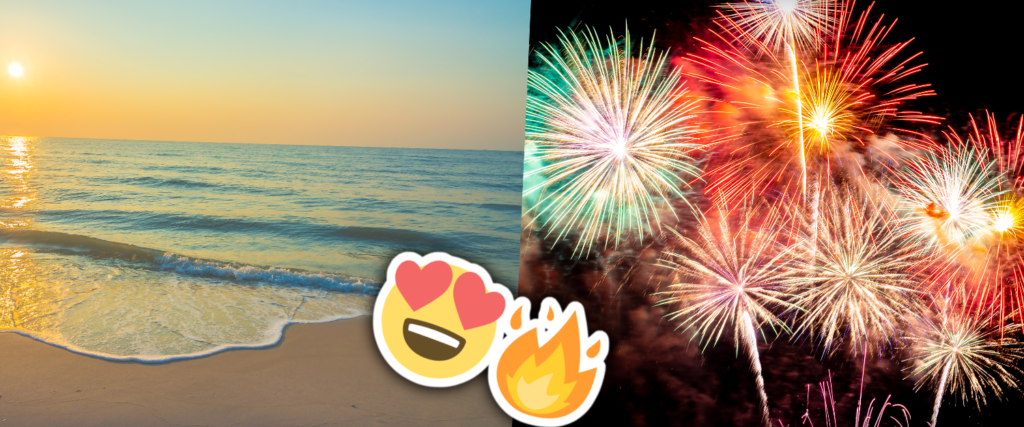
As the Maltese Islands are predominantly Catholic, whereby religion and customary practices have an extraordinary impact evident in everyday life. Pretty much every town in Malta has its very own feasts devoted to their particular patron. The Maltese culture is known for their love towards their patron and their town feasts. Religious feasts in Malta are no exception when it comes to carousing and enjoying to the fullest.
The origin of feasts in Malta
The feasts were established during the rule of the Knights of St. John under Grandmaster De Rohan from 1775 to 1797. There are around 60 feasts in Malta and 20 feasts in Gozo which make it an aggregate of around 80 town feasts in the Maltese Islands, a pretty big number for a small country.
In the beginning, feasts were meant to be a celebration of thanksgiving for favours received from heaven. The feasts later became one important part of Maltese culture as locals started celebrating them with fervour and love. Feasts are now typically celebrated as festivals that go on for days or weeks depending on the feast.
Feasts in Malta have a life of their own and are a sneak-peak into the glorious past. Various towns in Malta additionally have more than one ward church which implies that they have more than one town feast. A few towns additionally commend the equivalent feast, for example, the well known dining experience of Santa Maria which is praised on the fifteenth August in seven areas in Malta.
Except for a couple of town feasts, most feasts are held between the long periods of May and September. Hence, visiting Malta during the summer months would be a good option to get a first hand experience of Feasts in Malta.
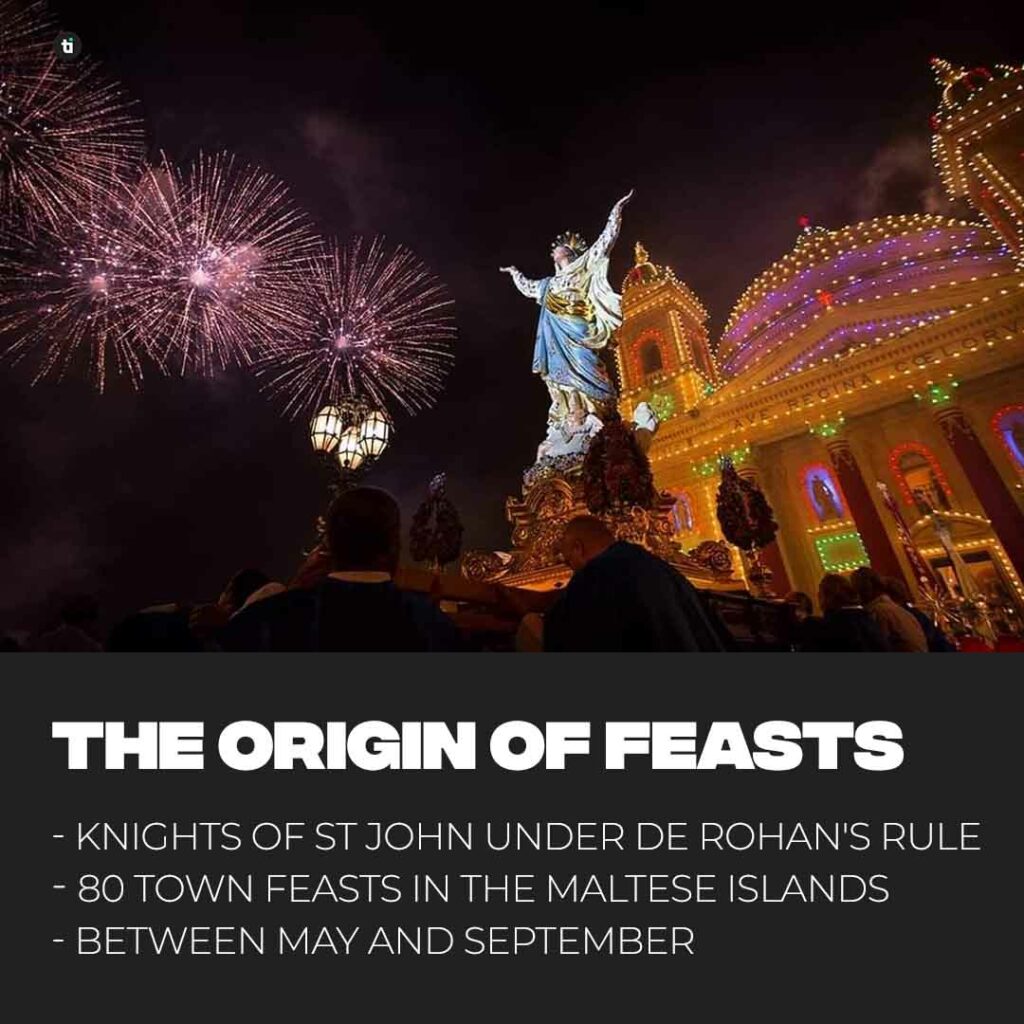
Feast Procession
Most feasts in Malta follow a general layout with the key components of these town feasts being religious parades, band marches, community get-togethers, firework processions and traditional desserts. With changing times, the option of fast food trucks and street parties with disco music has additionally been added to some mainstream feasts.
The excitement of Maltese people with every feast in Malta, is highlighted by the fact that feast celebration can begin even fourteen days before the actual day of the feast. They regularly start with chapel exercises, for example, band marches. The large walk typically occurs on the eve or two days before the big day. The Catherine wheels firecrackers show normally occurs on the eve or upon the arrival of the town feast. For tourists visiting Malta during this time, missing out on this occasion is a big loss and a big no no!
The square and the area church will demonstrate from before that a town feast is going to occur. There will be a ton of hues, strict relics, damask embroidered artwork, trims and structures to praise the patron, shedding light on the importance of craftworks as an expression of culture. These decorations now and then take an entire year to plan since the vast majority of them are hand-made.
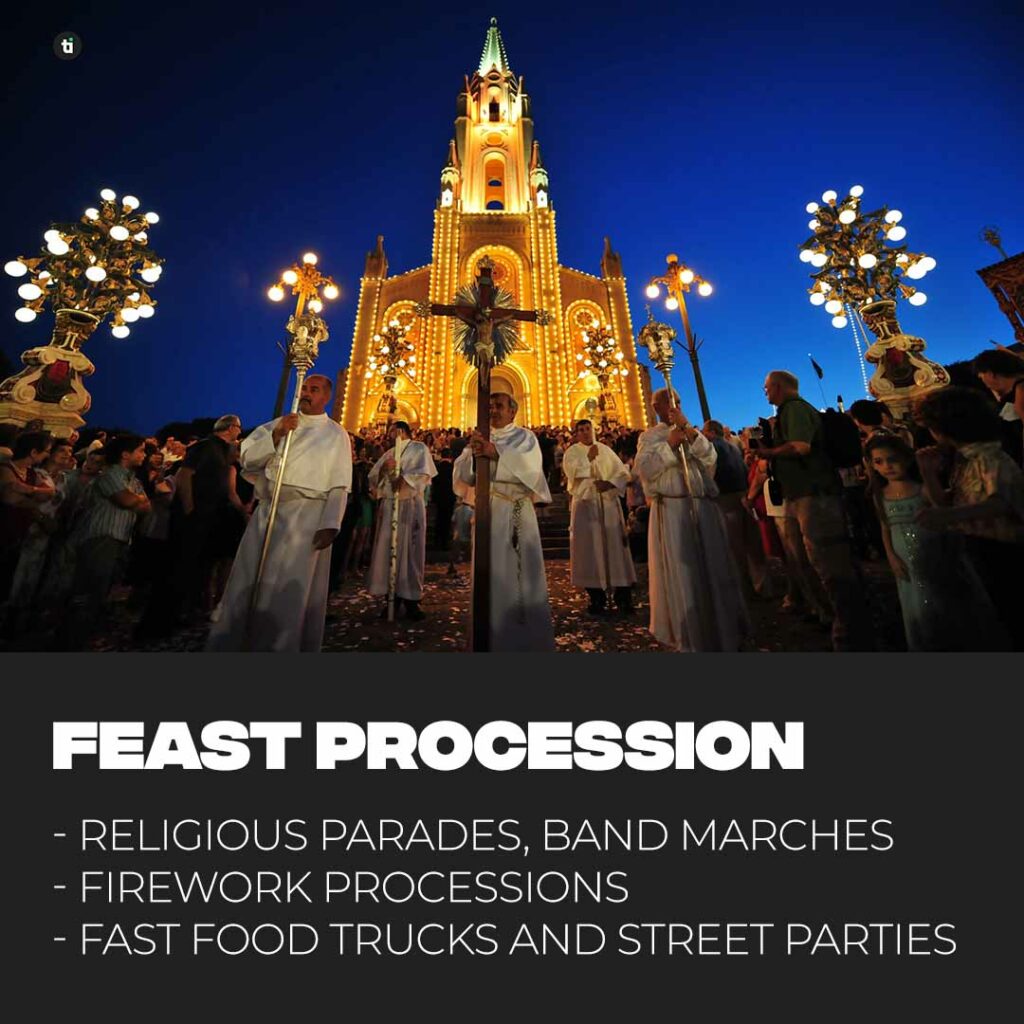
The Big Day
Upon the arrival of the actual big day, a parade typically happens in the first part of the day. Most of the people carouse on this day and enjoy the occasion to the fullest. On the night of the feast, the sculpture of the patron is carried by the congregation for a parade. The noteworthy feature of one particular feast in Malta, being the one in Mgarr, Malta is the conveying of the sculpture of the patron. Feast lovers offer for the benefit of lifting the sculpture out of the congregation and onto a conspicuous spot in the town square, paying large cash for the honour and benediction of conveying the sculpture. All money raised goes to a cause or to concede a portion of the costs incurred in organising the feast itself. During this parade, confetti, inflatables and decorations are dispatched from overhangs and housetops. Firecrackers are likewise basic on the day.
One of the major crowd pullers for any feast in Malta are anyway the firecrackers shows, the finish of the night illuminating the night sky to the sound of ‘oohs’ and ‘aahs’ from the group. Malta is notable for its pyrotechnic capacity, displayed at the town feast where towns strive with one another for the best display of fireworks.
Food stalls dot the pretty layout of the town and serve everything from candy floss and sausages to customary toll – hence, good dieting isn’t part of the plan when part of a feast in Malta. For tourists with a sugar tooth, trying some “imqaret” ( wickedly flavourful pan fried date cakes) and nougat sold from customary dim wooden slows down with antique gauging scales is a must.
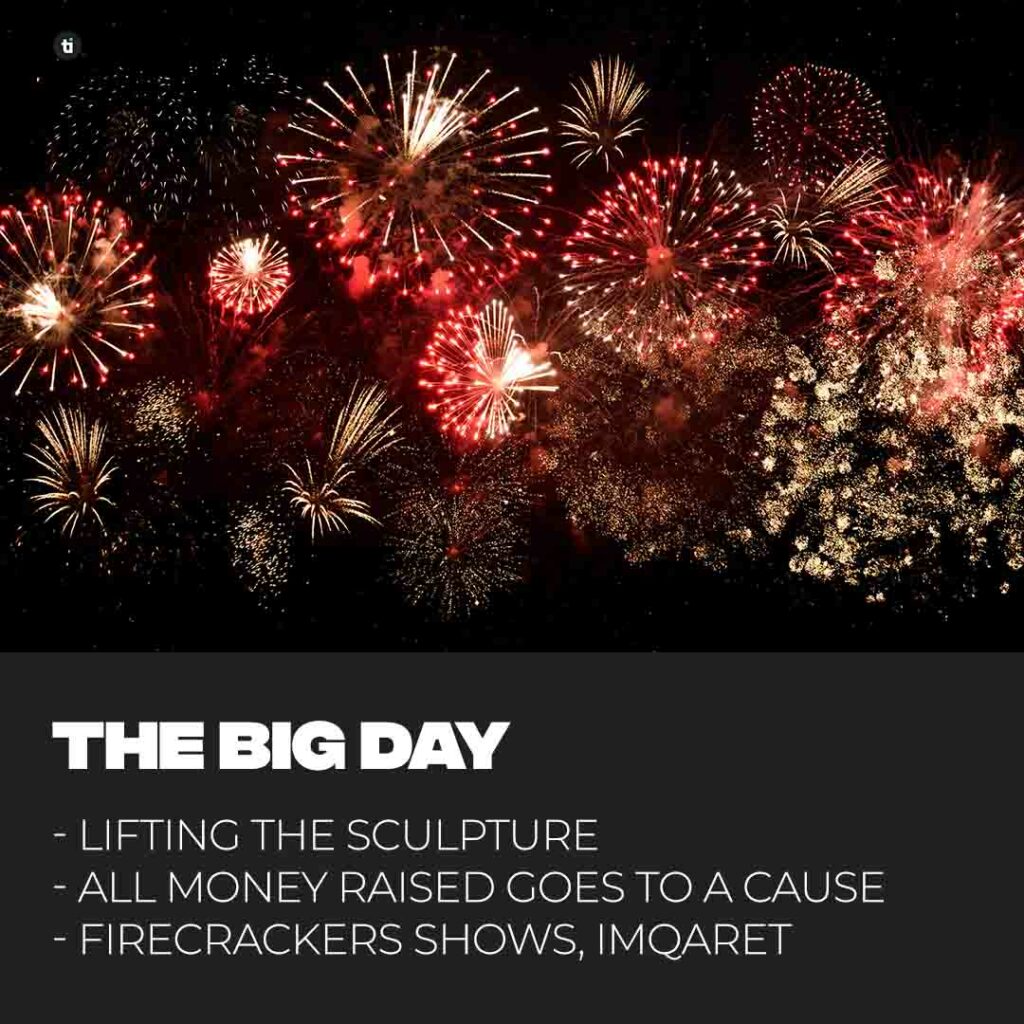
Religious Celebrations
The feasts in Malta have always been a crucial part of the archipelago since its origin. The importance of feasts in village life is consistently increasing with them acting as both community building recreations for both natives and non-natives alike. With epic celebrations being the core of all feasts in Malta, they are one of a kind experiences everyone visiting Malta needs to encounter at least once. It’s so easy to get caught up in the atmosphere and with all the young people in their festival t-shirts and the dancing and drinking it can be easy to forget that these are actually religious celebrations.
A detailed program of each local feast is usually found on the relevant village parish and band club websites. Local tour operators often arrange evening feast excursions especially to coincide with the feast of the Assu
mption or simply ‘Santa Marija’ on the 15th August. Another favourite is Our Lady of Victories held on the 8th September, celebrating the defeat of the Turks at the end of the Great Siege of 1565 which also coincides with the end of Blitz in Malta and with the feast of the Birth of the Madonna. The highlight of this great day is the Regatta (boat race) held in the Grand Harbour. Both are great times to visit Malta if you can take the summer’s heat!
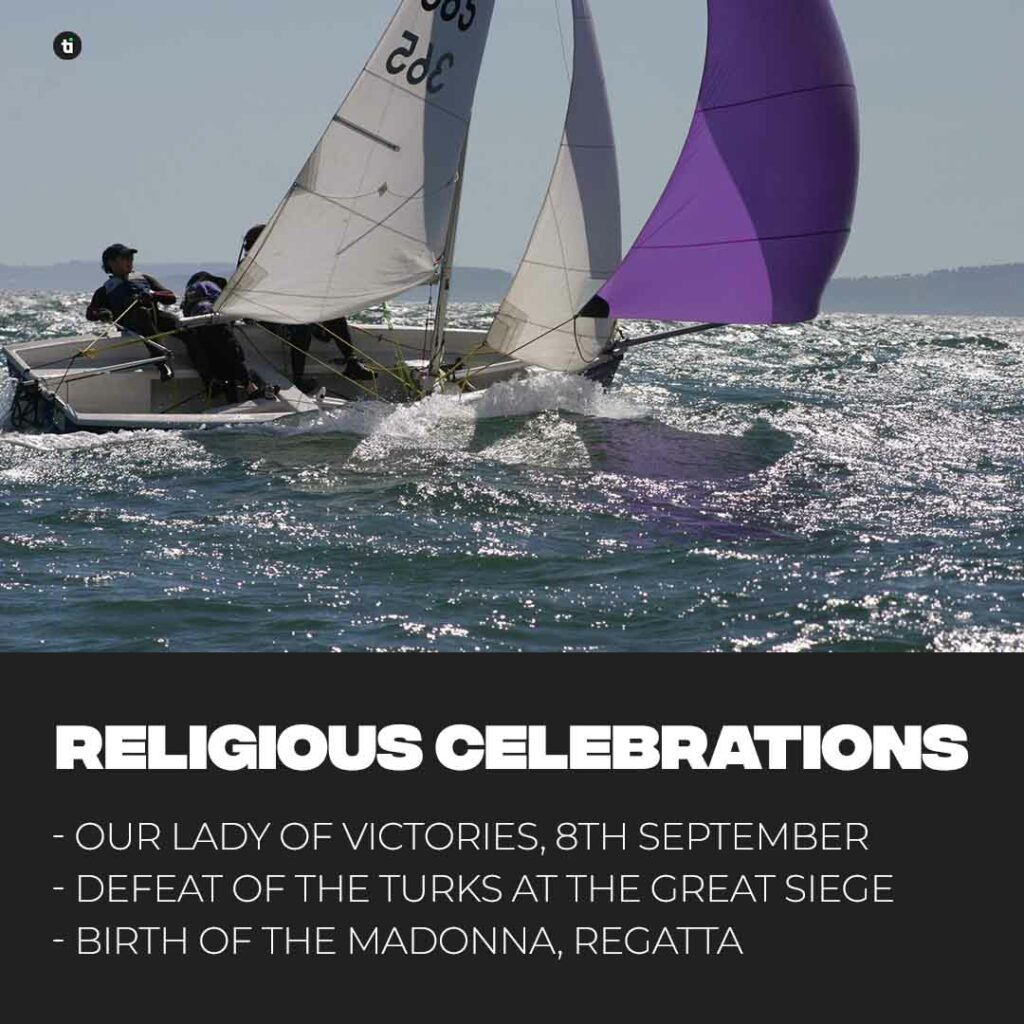
Conclusion
The exuberant and loud ambience is just an insight into the jolly nature of the Maltese people, so making the most of it is by participating and being entertained with music, food, colours, fireworks and different places.